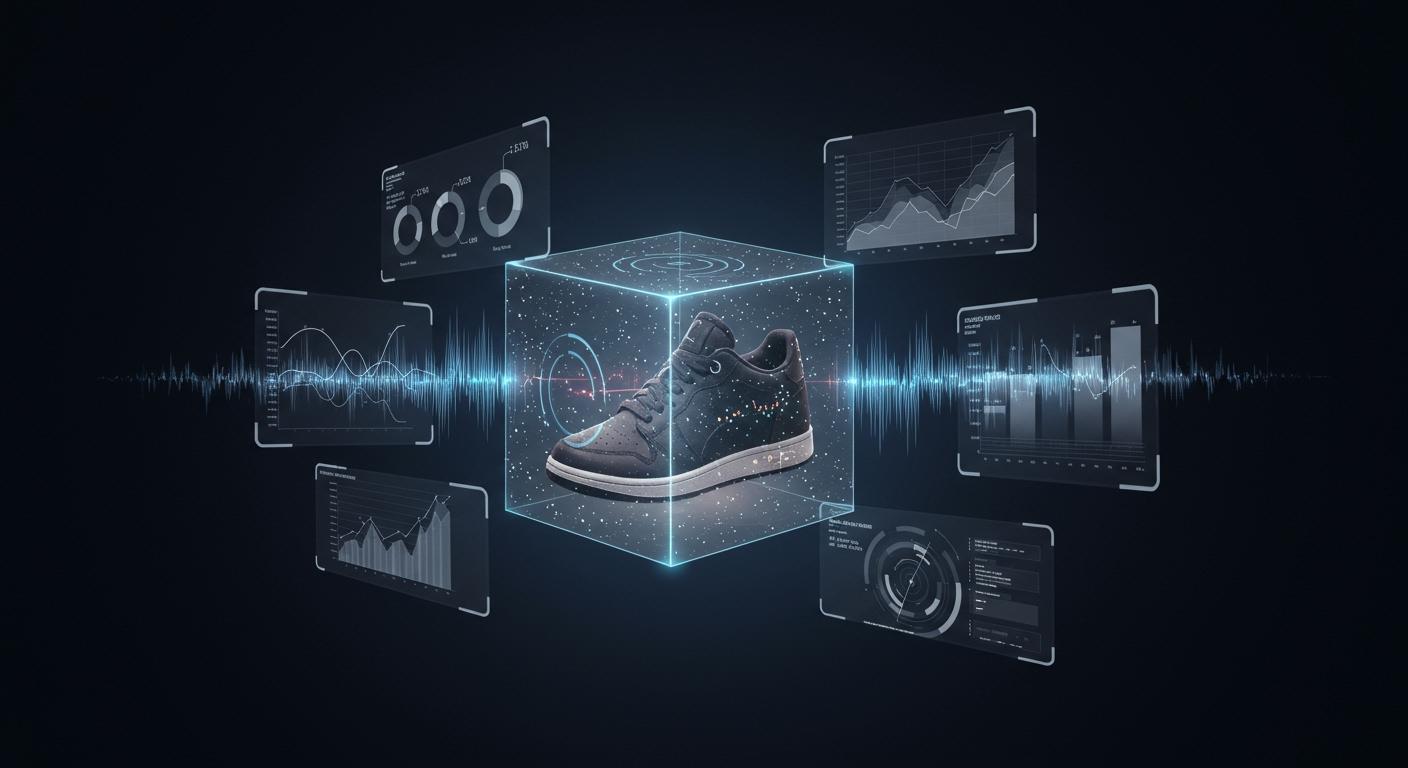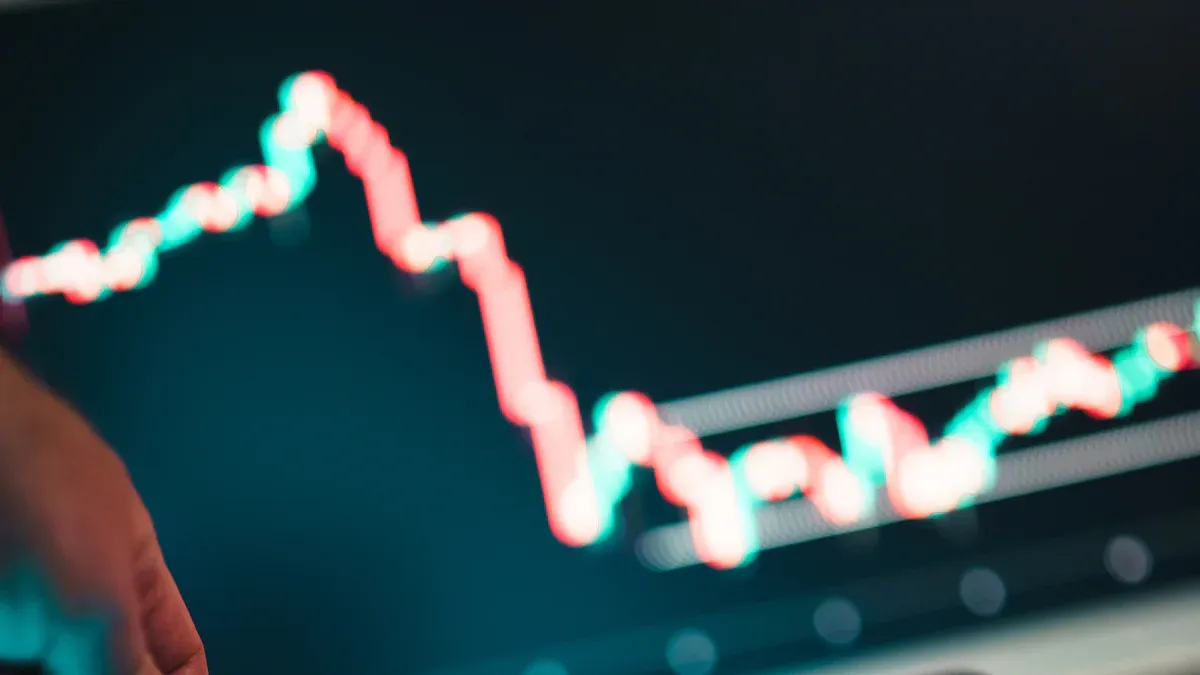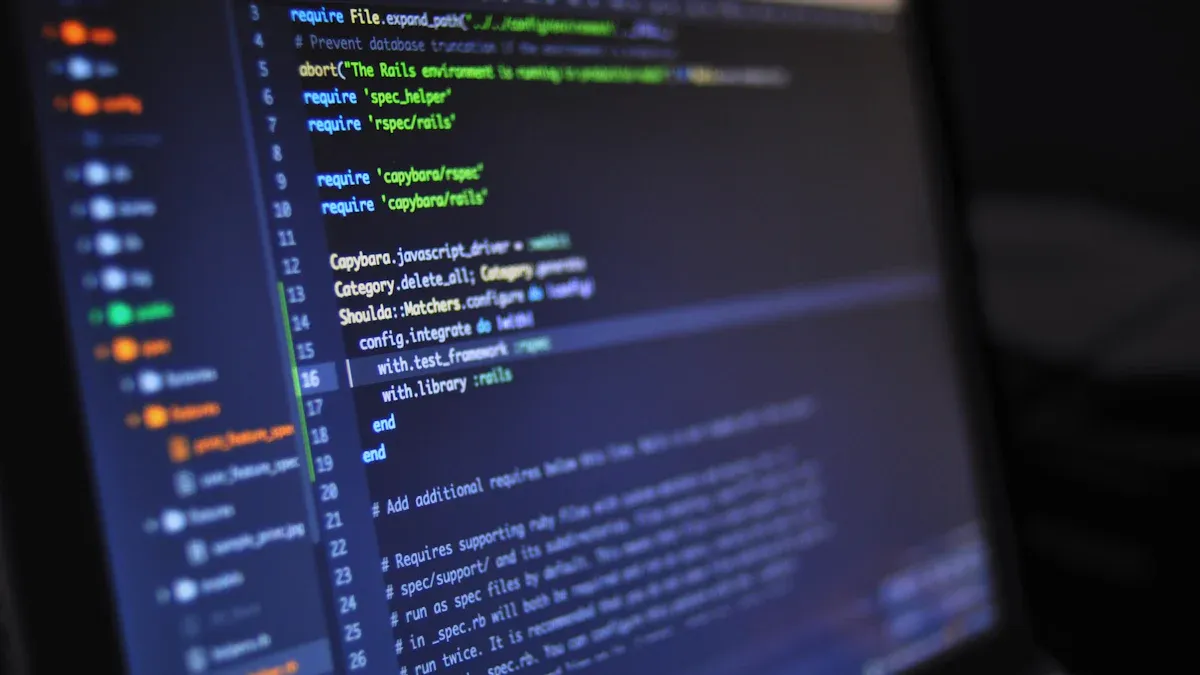
The apparel drop model is a high-stakes game where a razor-thin line separates a sell-out success from a costly failure. Brands now leverage AI and predictive analytics to master this game. The market for AI in fashion is projected to expand at a 25% compound annual growth rate, while the broader AI in retail market anticipates a 28% CAGR.
Data-driven demand sensing offers a modern approach to forecasting. It uses powerful AI analytics to gauge real-time customer demand. These AI models use advanced analytics, offering insights to validate product demand. This AI-powered analysis of demand, fueled by AI analytics, helps brands make smart data-driven decisions before committing their apparel models to production. AI analytics are key to understanding this demand.
The Power of Data-Driven Demand Sensing

Data-driven demand sensing provides a powerful advantage in the fast-paced apparel market. It moves beyond simple sales forecasting. Brands use it to get a clear picture of customer demand before making big inventory bets. This approach uses AI and real-time analytics to create accurate predictive models.
A Modern Approach to Forecasting
This modern approach to forecasting uses AI to process huge amounts of data. Traditional forecasting models often fail with new products because they lack historical sales data. New AI models, however, analyze many signals to understand demand. They look at search trends, social media activity, and even weather forecasts. This creates a complete view of potential demand. The goal is to get precise insights for better forecasting. These analytics help brands understand what customers truly want.
Sensing vs. Traditional Forecasting
Traditional forecasting looks backward. It relies on historical sales data to predict future demand. Demand sensing looks forward. It acts as an early warning system for what will happen next.
Demand sensing is proactive. It focuses on current demand signals. Traditional forecasting is reactive. It analyzes past demand patterns.
This difference is critical for drop models. The following table highlights the core distinctions between the two forecasting methods:
| Feature | Demand Sensing | Traditional Forecasting |
|---|---|---|
| Data Inputs | Real-time data (social media, web search) | Historical sales data (weekly or monthly) |
| Time Horizon | Short-term (days to weeks) | Medium to long-term (months) |
| Focus | Proactive response to current demand | Reactive analysis of past demand |
Validating Hype Before Production
Brands can validate hype with data-backed forecasting. Integrating advanced data analytics turns social buzz into reliable demand signals. Machine learning models can achieve 75-90% accuracy in forecasting, cutting excess inventory by 30%. This market trend analysis confirms if a product's excitement will lead to sales. Strong forecasting helps manage demand effectively. Leading brands already use these AI analytics to improve their forecasting and boost profits.
| Brand | Data-Driven Strategy | Profitability Impact |
|---|---|---|
| Zara | Predictive analytics for inventory alignment | Reduces overproduction and financial risks |
| H&M | AI-powered systems and returns analysis | Tailors inventory to specific store locations |
| Levi's | Supply chain analytics | Boosts productivity and supplier transparency |
Ultimately, this method provides the confidence to commit to production, knowing the demand is real.
Key Data Sources for Demand Sensing

Accurate data-driven demand sensing relies on diverse data streams. Brands must look beyond historical sales to capture real-time signals of purchase intent. This approach provides the foundation for precise demand forecasting. The right analytics turn raw data into powerful insights for forecasting models.
Social and Web Analytics
Social media offers a rich view of consumer preferences. Brands should track metrics that signal strong purchase intent. High save rates and share rates are more valuable than simple likes. These actions show a user plans to return to a product. Engagement velocity, or how quickly a post gains traction, also indicates strong demand. AI analytics tools like Sprout Social or Brandwatch process this data. They help build better forecasting models and understand customer preferences. These analytics improve demand forecasting.
An emerging brand used Instagram saves and poll preferences for a jacket release. This strategy helped them stock the right colors. The jacket sold out two weeks early, doubling projected revenue.
Pre-Order and Waitlist Data
Pre-orders and waitlists provide the most direct signal of customer demand. These lists quantify real interest before production begins. Brands can use waitlist landing pages to gather crucial data. Quizzes can ask about design preferences or price sensitivity. This information validates demand and helps segment audiences. These pre-order and marketing interaction metrics are vital for accurate forecasting. The data helps refine AI models for better demand forecasting.
Influencer and Competitor Signals
Brands gain an edge by monitoring influencers and competitors. Tracking influencer posts shows how new styles resonate with target audiences. Tools like Keyhole and Meltwater offer real-time analytics on this activity. Analyzing competitor drops reveals pricing strategies and customer sentiment. This market and trend intelligence helps brands position their own products. It provides context for their own demand forecasting and reveals consumer preferences. Machine learning models use these signals for smarter forecasting.
Real-Time Search Trends
Search engine data reveals what customers are actively looking for. Tools like Google Trends quantify demand for specific styles or products. Brands can identify "breakout" queries that show a sudden spike in interest. This market trend analysis is crucial for forecasting. Analyzing search trends helps brands understand specific preferences. For example, a search for "red dress" is less specific than "red, racer back, high waisted dress." This detail helps refine AI models. Better models lead to better demand forecasting and a deeper understanding of consumer preferences. This forecasting is key to managing demand.
Core Techniques for Analysis
Collecting data is only the first step. The real power comes from turning that raw data into predictive intelligence. The following techniques are how brands transform scattered signals into a clear picture of future demand. These methods use AI to provide deep analytics.
Automated Sentiment Analysis
Sentiment analysis uses Natural Language Processing (NLP) to understand customer opinions. These AI algorithms interpret the feeling or "vibe" within large volumes of text. This allows brands to track shifts in consumer trends. The goal is to move beyond simple mention counts. Brands need to know if the buzz around a product is positive, negative, or neutral. This analysis provides crucial context for demand forecasting.
For example, a high volume of comments is a good signal. But AI-powered sentiment analysis reveals if those comments are expressions of purchase intent ("I need this!") or criticism ("The color is all wrong.").
Several platforms offer advanced sentiment analysis for the fashion industry. These tools help brands process huge amounts of text data from reviews and social media.
- Talkwalker uses AI to analyze brand mentions across social media, blogs, and forums.
- Brandwatch monitors conversations in real-time to evaluate consumer opinions.
- Brand24 employs NLP to understand the emotional context of online discussions.
These analytics help brands understand the true nature of customer demand.
AI-Powered Fashion Analytics
AI-powered fashion analytics gives brands a significant competitive advantage. AI models can process vast amounts of unstructured data, like social media comments and images. This happens at a scale impossible for human teams. This capability is central to modern data-driven demand sensing. AI-powered fashion analytics identifies subtle patterns and trends before they become mainstream.
AI platforms use a combination of technologies to generate predictive insights.
- Machine Learning (ML) algorithms identify patterns from historical data to predict future outcomes.
- Natural Language Processing (NLP) interprets human language in comments for sentiment analysis.
- Computer Vision analyzes images and videos to recognize logos, classify products, and identify visual trends.
For example, AI models like Convolutional Neural Networks (CNNs) analyze fashion images for trend analysis. Zara's AI system scans social media and blogs to detect subtle shifts in color preferences and style elements. This provides an early warning for emerging trends. AI-powered fashion analytics turns social media into a proactive tool for growth.
| Trend Identified by AI | Market Outcome |
|---|---|
| Linen Utility Sets | AI spotted rising interest in early 2024; the style sold out by summer. |
| Ruched Maxi Dresses | AI identified a surge in interest before the style went viral, leading to record sales. |
| Futuristic Metallic Fabrics | AI detected the trend long before it appeared on major runways. |
These powerful AI-powered fashion analytics models help brands understand what customers want next. The AI provides the analytics needed to make smart decisions. Ultimately, AI-powered fashion analytics helps brands act on market trend analysis with confidence. The machine learning models driving these AI-powered fashion analytics systems are essential for forecasting demand in the fast-moving apparel industry.
Developing a Hype Score
A "Hype Score" is a powerful metric that turns complex data into a single, actionable number. It combines multiple data points to create a weighted score that quantifies the potential demand for a drop. This score helps brands prioritize production and allocate inventory more effectively. It is the final output of sophisticated AI models.
Brands can customize the score based on which signals they find most predictive. For instance, a confirmed pre-order is a much stronger signal of demand than a social media like. The AI models learn over time which signals best predict sell-through success.
Here is a simplified example of how a Hype Score could be calculated:
| Data Signal | Weight (Example) | Raw Data | Weighted Score |
|---|---|---|---|
| Waitlist Sign-ups | 40% | 5,000 users | 2,000 |
| Positive Comment Velocity | 25% | 1,200/hour | 300 |
| Instagram Post Saves | 20% | 10,000 saves | 2,000 |
| Influencer Mentions | 15% | 30 mentions | 4.5 |
| Total Hype Score | 100% | 4,304.5 |
This score provides a clear, data-backed benchmark. Brands can set thresholds, deciding to greenlight production only when an item's Hype Score exceeds a certain number. This transforms forecasting from a guessing game into a strategic, data-driven process. The AI models provide the core insights for this score.
A Framework for Implementation
Adopting data-driven demand sensing requires a structured framework. This process turns raw data into profitable decisions. Brands can follow a four-step cycle to implement this strategy effectively for every drop. This framework ensures that each phase, from initial data gathering to post-launch review, contributes to smarter inventory management and business growth.
Step 1: Pre-Launch Data Collection
The first step begins long before the product launch. Brands must systematically collect early demand signals from various digital channels. This initial data forms the foundation for all subsequent analysis. The goal is to capture indicators of genuine purchase intent, not just general awareness.
Key data collection activities include:
- Monitoring Social Engagement: Track metrics like post saves, shares, and comment velocity on teaser content.
- Building Waitlists: Create dedicated landing pages for users to sign up for launch notifications. This quantifies direct interest.
- Running Interactive Polls: Use social media stories to ask followers about preferences for color, size, or design details.
- Analyzing Search Trends: Monitor search query volume for keywords related to the upcoming product style.
This proactive collection phase provides the raw material for the AI models to generate initial demand forecasts.
Step 2: Real-Time Analysis
Once data starts flowing, real-time analysis begins. This step uses powerful platforms to process and interpret demand signals as they happen. The system must handle high volumes of information from multiple sources simultaneously. Open-source frameworks like Apache Flink are designed for this, enabling advanced analytics on live data streams to detect patterns and anomalies instantly.
Brands can leverage several types of platforms for this task:
- Demand Sensing Platforms: Solutions like SAP Integrated Business Planning (IBP), o9 solutions, and Blue Yonder use AI to process hundreds of demand signals for accurate forecasting.
- Data Analytics Tools: Platforms such as Google Cloud BigQuery and Microsoft Azure Synapse Analytics provide the infrastructure for real-time data processing and complex analytics.
- Visualization Platforms: Tools like Tableau and Google Data Studio create live dashboards that help teams visualize market trend analysis and monitor key metrics.
Other specialized supply chain platforms like E2Open, Kinaxis, and Logility also offer robust AI-powered demand sensing. These tools provide the analytics engine needed to turn a flood of data into a clear stream of insights.
Step 3: From Data to Actionable Insights
Analysis is only valuable when it leads to better decisions. This step focuses on translating analytics into specific, actionable insights for production and allocation. The Hype Score becomes a critical driver for making data-backed decisions. It guides everything from initial order quantities to regional inventory allocation. This is where AI delivers tangible business value.
The primary output of this stage is a detailed plan for inventory allocation and replenishment. This plan ensures the right amount of product is in the right place at the right time, leading to inventory management optimization.
A brand might use a tiered action plan based on an item's Hype Score. This approach provides clear rules for inventory allocation and initial replenishment planning.
| Hype Score | Production Decision | Initial Allocation Strategy | Replenishment Plan |
|---|---|---|---|
| High (85+) | Full production run; prioritize manufacturing. | Wide allocation across all major markets. | Pre-plan for immediate replenishment. |
| Medium (60-84) | Moderate production run; hold some capacity. | Focused allocation to top-performing regions. | Prepare for conditional replenishment. |
| Low (<60) | Limited test run or delayed launch. | Minimal allocation to a single test market. | No initial replenishment planned. |
This structured approach removes guesswork from inventory planning. It provides actionable insights for precise allocation and replenishment. The process generates further actionable insights for marketing, guiding ad spend toward products with proven demand. This optimization of allocation and replenishment is key. The final allocation and replenishment strategies come from these actionable insights.
Step 4: Post-Drop Feedback Loop
The framework does not end at launch. The final step is creating a feedback loop to continuously improve the AI models. After the drop, brands collect performance data to measure the accuracy of their forecasts. This creates a cycle of learning and refinement. This data provides new actionable insights for future drops and current replenishment decisions.
Key post-drop metrics to analyze include:
- Sell-Through Rate: How quickly did the product sell out?
- Geographic Performance: Which regions had the highest demand? This informs future allocation.
- Returns Data: What were the primary reasons for returns? This offers insights into product quality or description accuracy.
- Customer Feedback: What are customers saying in reviews and on social media post-purchase?
This information is fed back into the AI system. The models learn which pre-launch signals were the most predictive of success. This refines the Hype Score algorithm, improves future allocation and replenishment strategies, and makes the entire data-driven demand sensing process smarter over time. These analytics provide actionable insights that strengthen inventory management, allocation, and replenishment for the next cycle.
Brands can transform the drop model from a high-risk gamble into a strategic business driver. Integrating AI-powered demand sensing minimizes overstock and maximizes sell-through. This process builds a stronger data-driven culture within the organization.
🚀 Take the Next Step: Brands should pilot a small-scale data collection project for their next drop. This test will reveal immediate value and provide powerful insights to build internal capabilities.
FAQ
What is data-driven demand sensing?
Demand sensing uses real-time data and AI to predict customer demand. Brands analyze signals like social media trends and search queries. This method provides a current view of the market, moving beyond historical sales data for more accurate short-term forecasting.
How does demand sensing help with drop models?
It helps brands validate hype before production. By analyzing real-time interest, companies can make smarter inventory decisions. This process reduces the risk of overstocking unpopular items and ensures enough stock for high-demand products, maximizing profitability for limited-edition drops.
What is the most important data source for demand sensing?
Pre-order and waitlist data provide the strongest signal of purchase intent. This information offers a direct, quantifiable measure of customer commitment. It shows exactly how many people are ready to buy a product before the brand commits to a full production run.
How can a small brand start with demand sensing?
💡 Small brands can begin with accessible tools. They can monitor social media engagement on teaser posts, tracking saves and shares. Creating a simple email waitlist for an upcoming drop also provides valuable, direct data without requiring a large investment in complex software.
See Also
Leveraging Data Insights for Optimal Product Selection and Retail Success
Is Overflow Storage a Viable Solution for Expanding E-commerce Operations?
Revolutionary EDI Tracking Enhancements for Unprecedented Supply Chain Transparency
Modern Retail Inventory Tactics Boosting Consumer Happiness and Loyalty
Top Brands Achieve Rapid Expansion Using Advanced Distribution Networks